Some people like to dress up, and some people don’t. Personally, nothing makes me feel more regal and confident than a full skirt with a petticoat underneath. Besides this, most of the fashion trends that I have studied involve women’s clothing that required a petticoat to wear properly, yet I have never done much reading on this item by itself. I couldn’t think of anything I’d like to research this week more, so here I am!
Let’s take a look at the history of petticoats and the various ways they were used until the end of the 19th century.
The history of petticoats
The word “petticoat” has an interesting history, but was always used to refer to clothing worn underneath other clothing. In the 14th century undercoats called “petticotes” were worn by both men and women. Regretfully I wasn’t able to find an image of this article of clothing. “Petticoat” first began to be used to refer to an underskirt in the 15th century. According to Merriam Webster, the term was derived from the Middle English word petycote, which is a combination of pety=small + cote=coat.
Petticoats were in widespread use by the time the term came into regular use and would be a standard part of a women’s daily wardrobe until the 20th century.
Here are some of my favorite trends this discreet but essential underpinning enjoyed.
Made to be seen
The open skirt worn over a coordinating petticoat was a popular look on and off for hundreds of years beginning in the 1700s, though I have seen references even older than that.
Several looks utilized petticoats created for being seen including the polonaise, the robe à la française, and the robe à la anglais. I covered the two later in depth in my blog post Pannier, robe à la française, and robe à la anglais: what’s what.
Petticoats created for the purposes of being seen were often made of silk or cotton and decorated with intricate embroidery of both the same color or elaborately colorful designs. Many were also quilted, which I will explore below.
Here are some of my favorite made-to-be-seen petticoats from the 18th century.
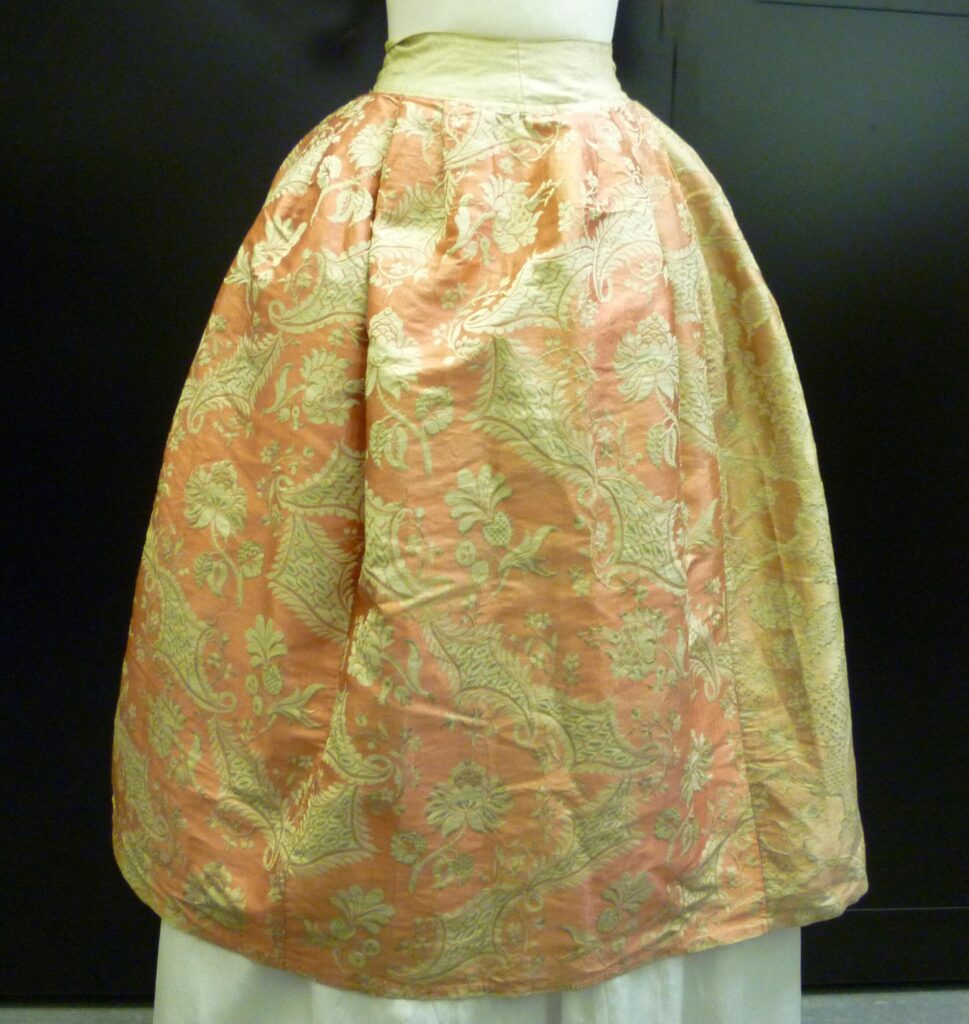
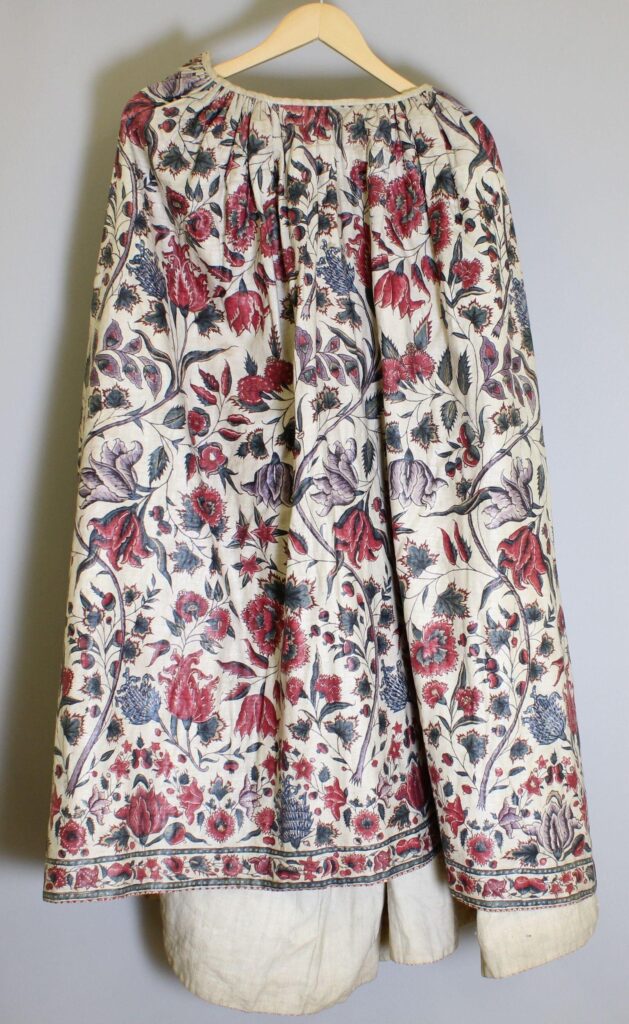
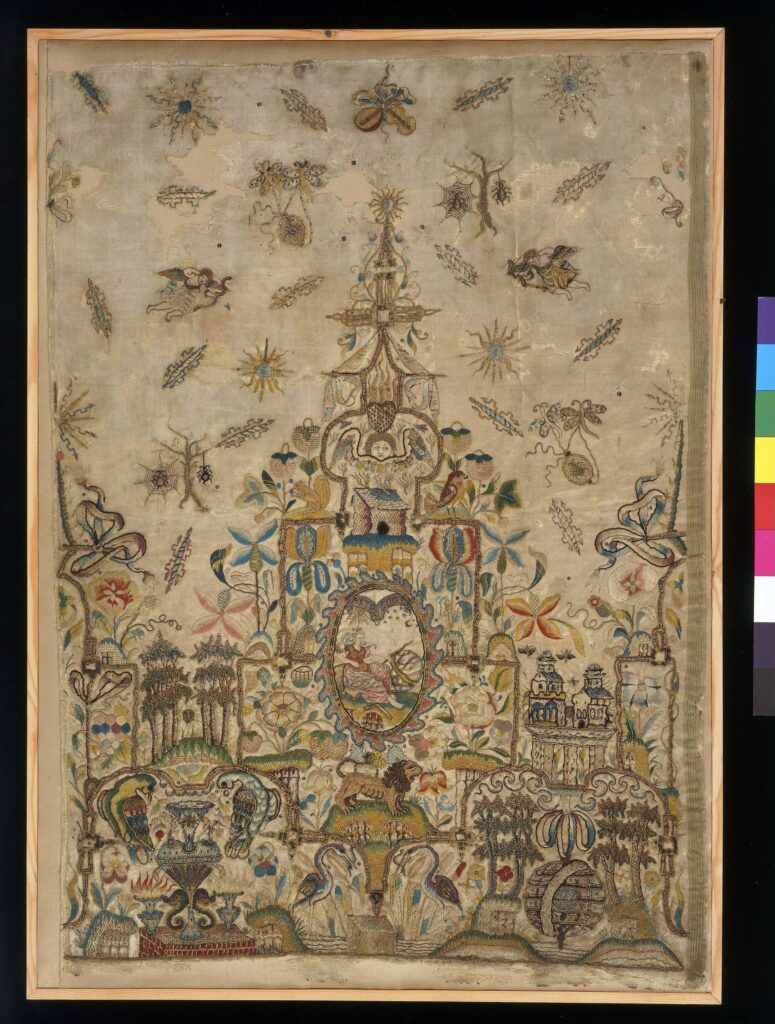
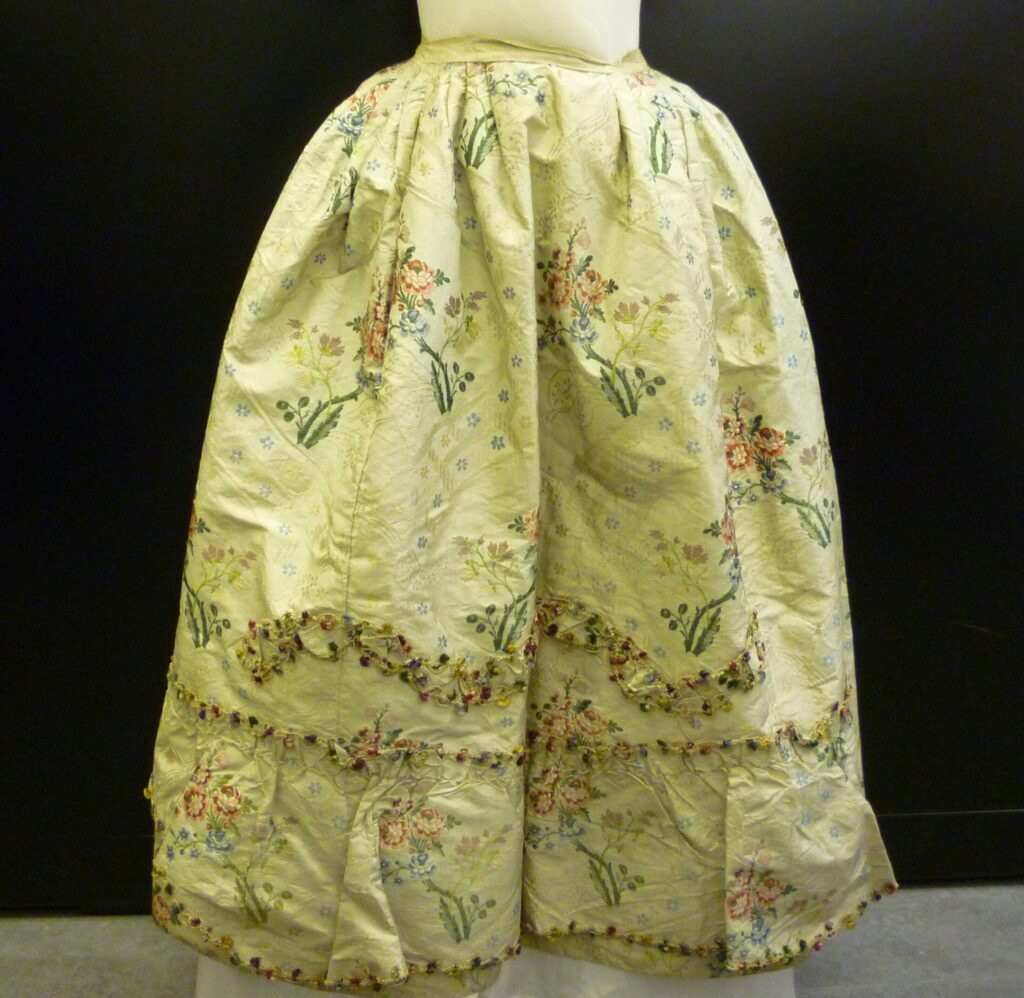
Quilted petticoats
I have to say, I’m a bit obsessed with quilted petticoats. There is something so sumptuous about them! Once again I had to tear myself away from my rabbit hole of exploring photos of them to complete a post!
Quilted petticoats can be seen in images dating from the 1600s and were great underpinnings for adding warmth and creating a bell-shaped silhouette. They would be widely used until the 19th century when they would be replaced by simple yet lovely white, ruffled petticoats. Although the bell-shaped skirt would enjoy a comeback, it was largely achieved through the use of hoops and crinoline.
Because quilted petticoats were so widely used in the 18th century, they are decorated in stunning patterns to be seen and were often more elaborate than the dress they accompanied.
Here are some of my favorite examples.
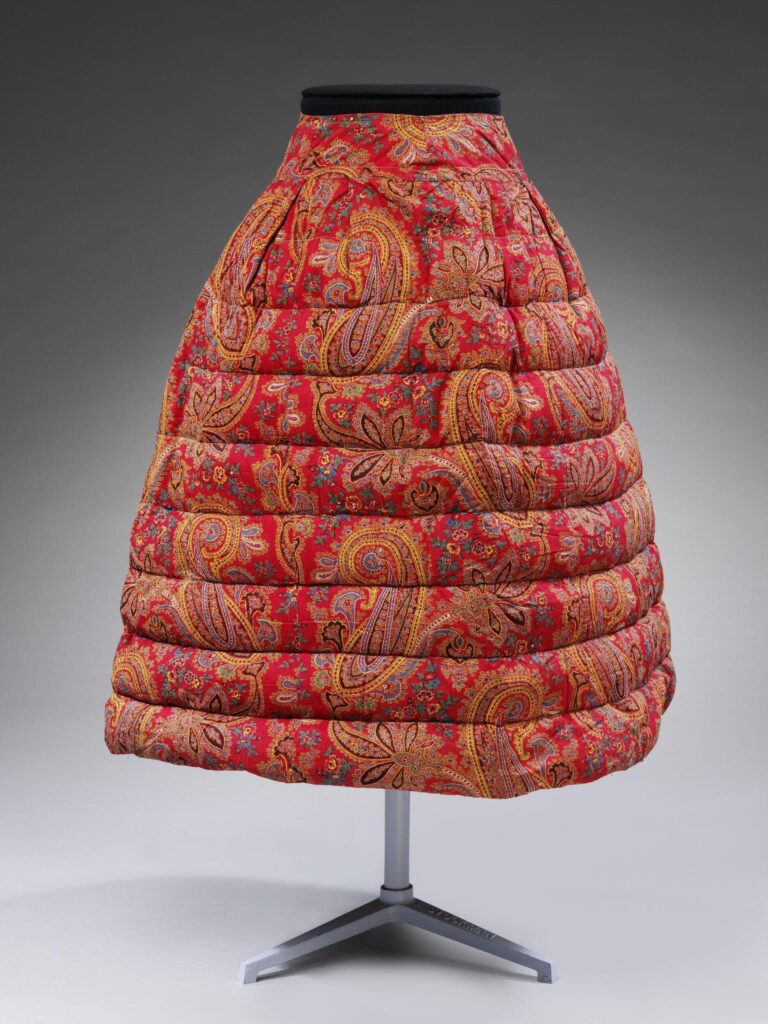
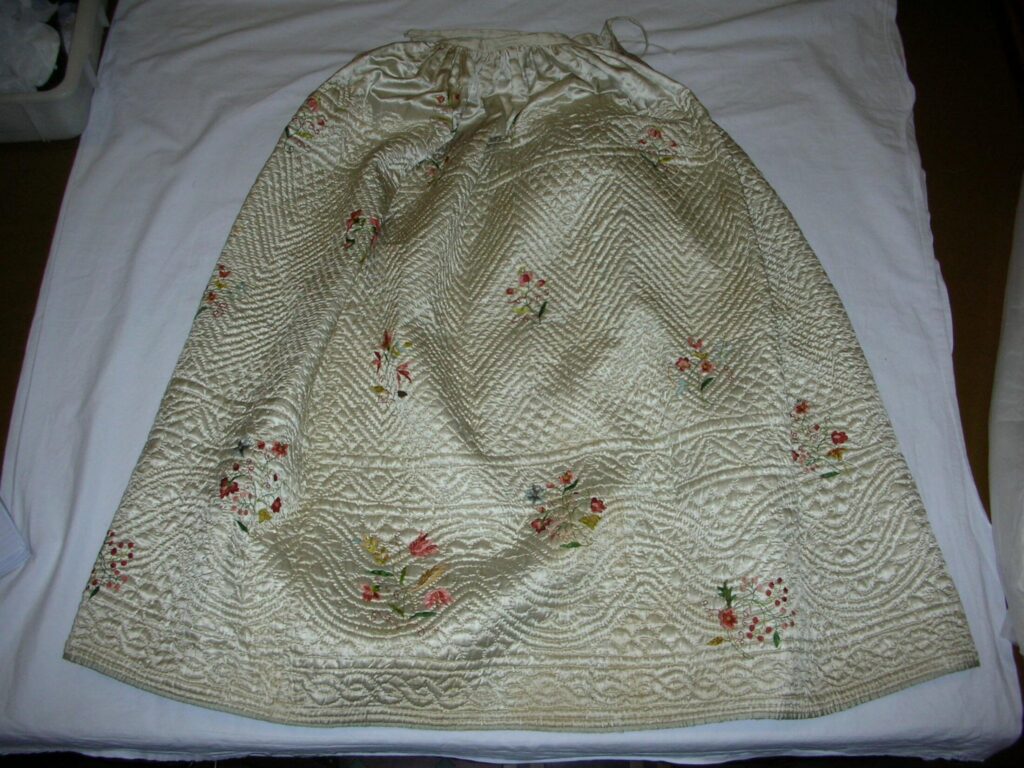
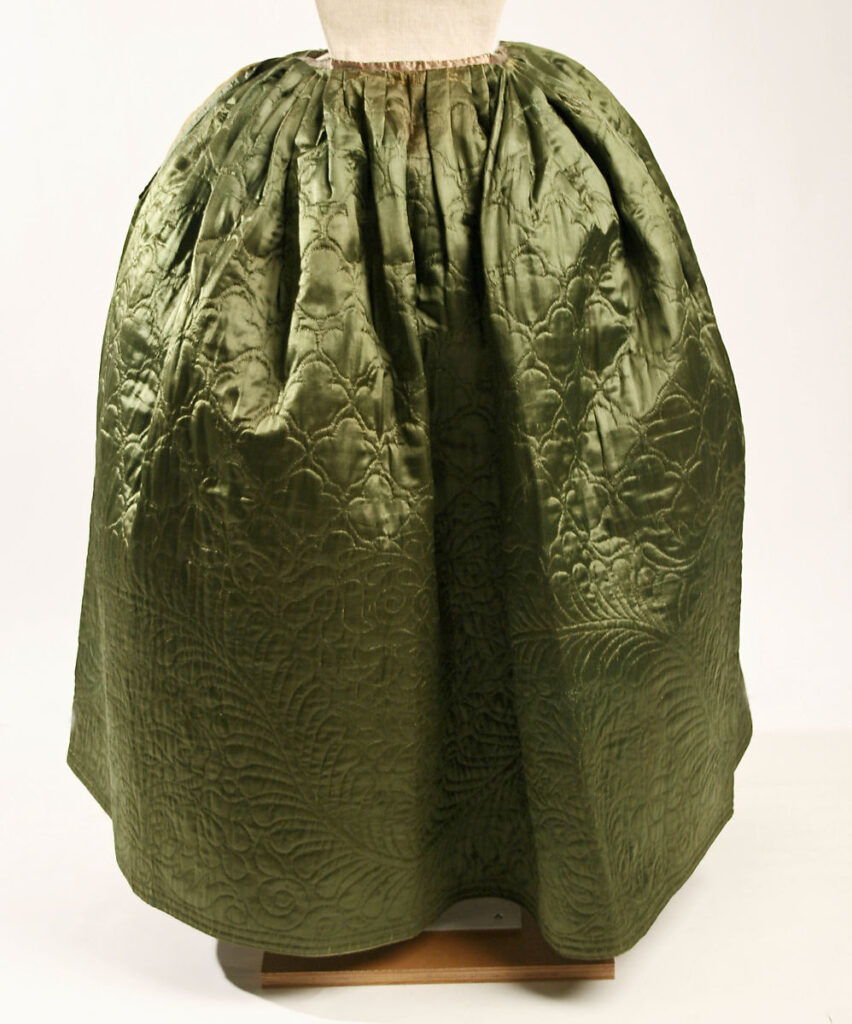
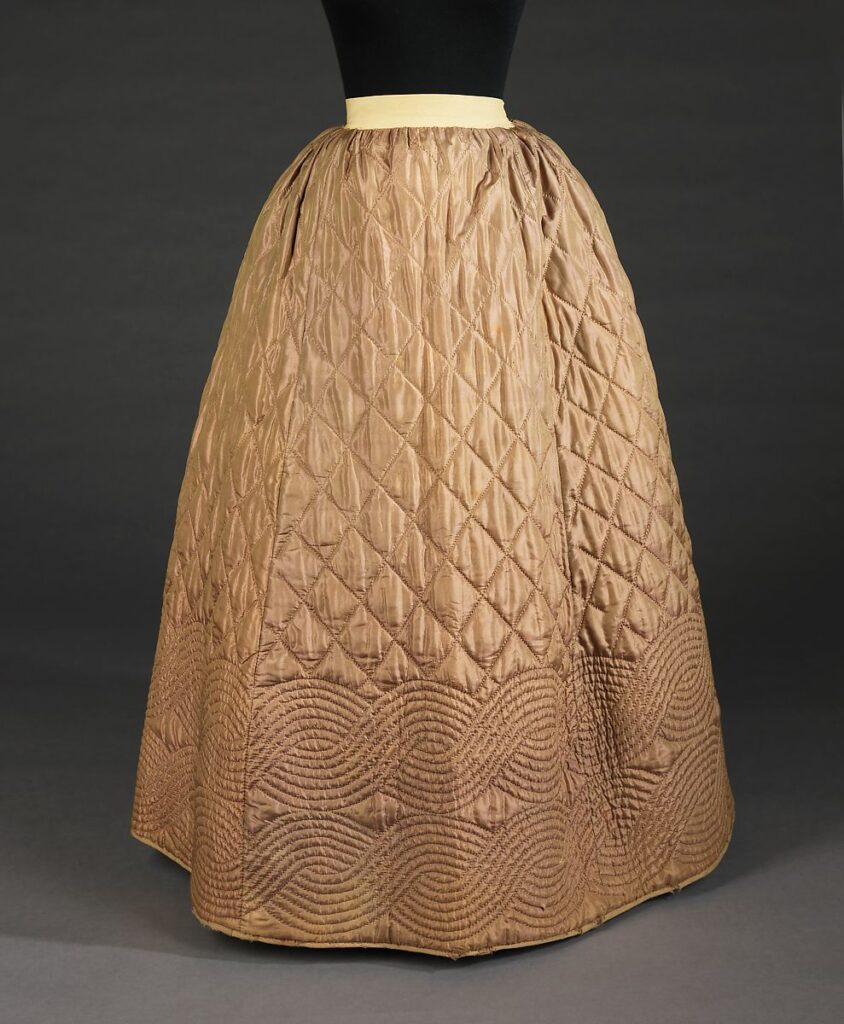
Bustled up with nowhere to go
Another petticoat trend that set itself apart was the bustled petticoat, which I, of course, had to include given my love of the bustle. Bustled petticoats are proof of just how important it was for women to get as much volume in the back of their skirts as possible during the bustle craze of the 1870s.
While a bustled petticoat would help to add a bit of bulk, they would not be worn alone. Even with all the ruffles, an actual bustle would have been worn on top to ensure the right amount of volume remained after adding a skirt or gown.
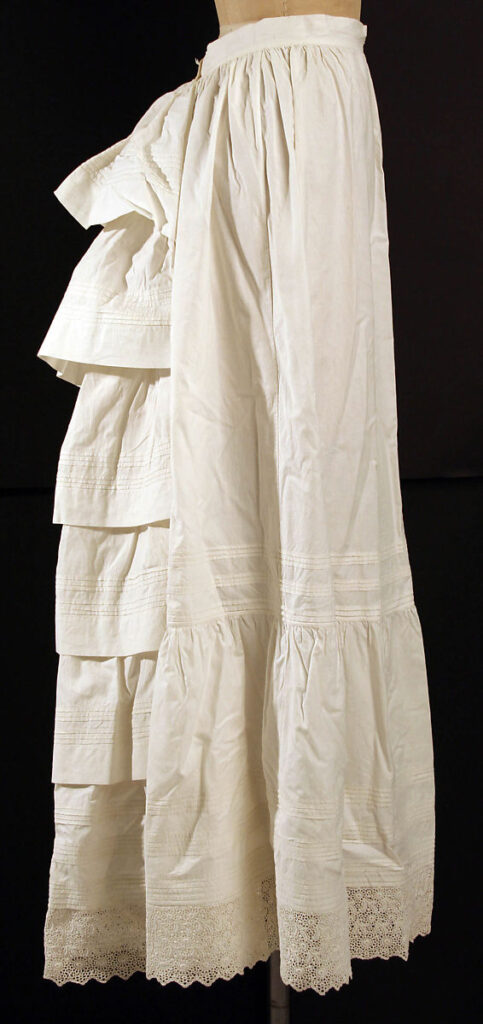
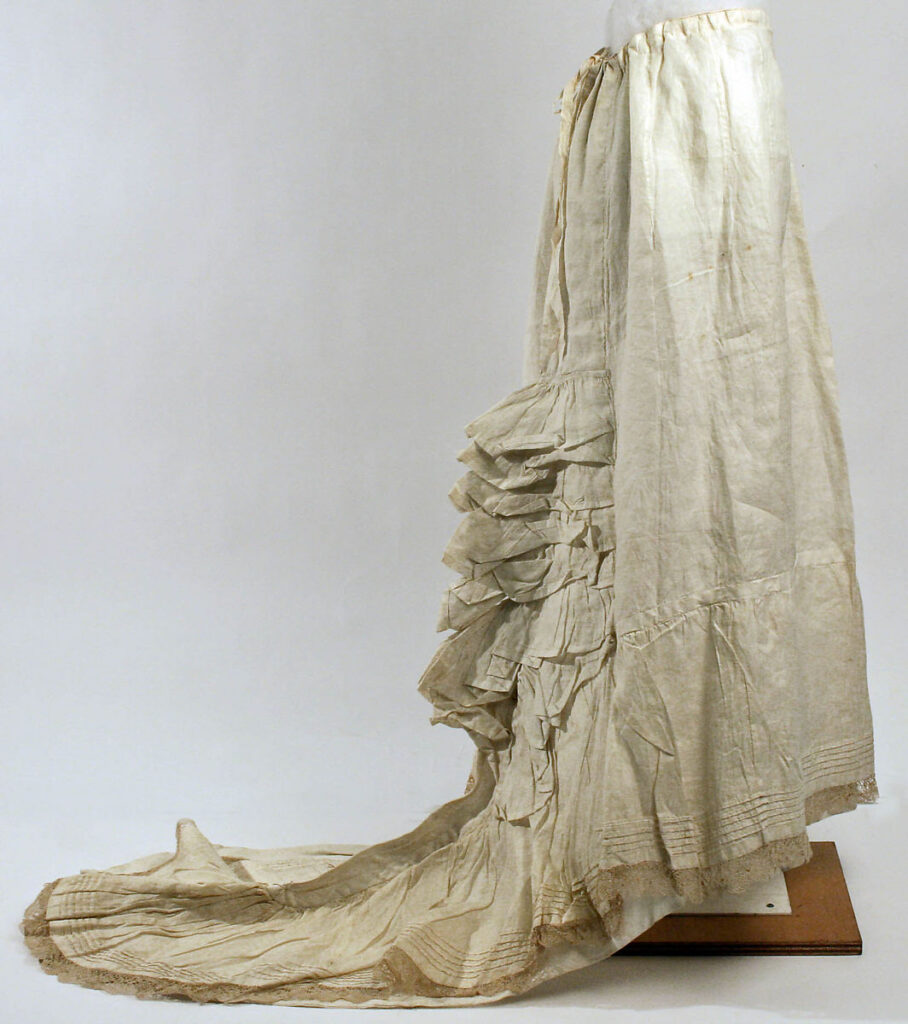
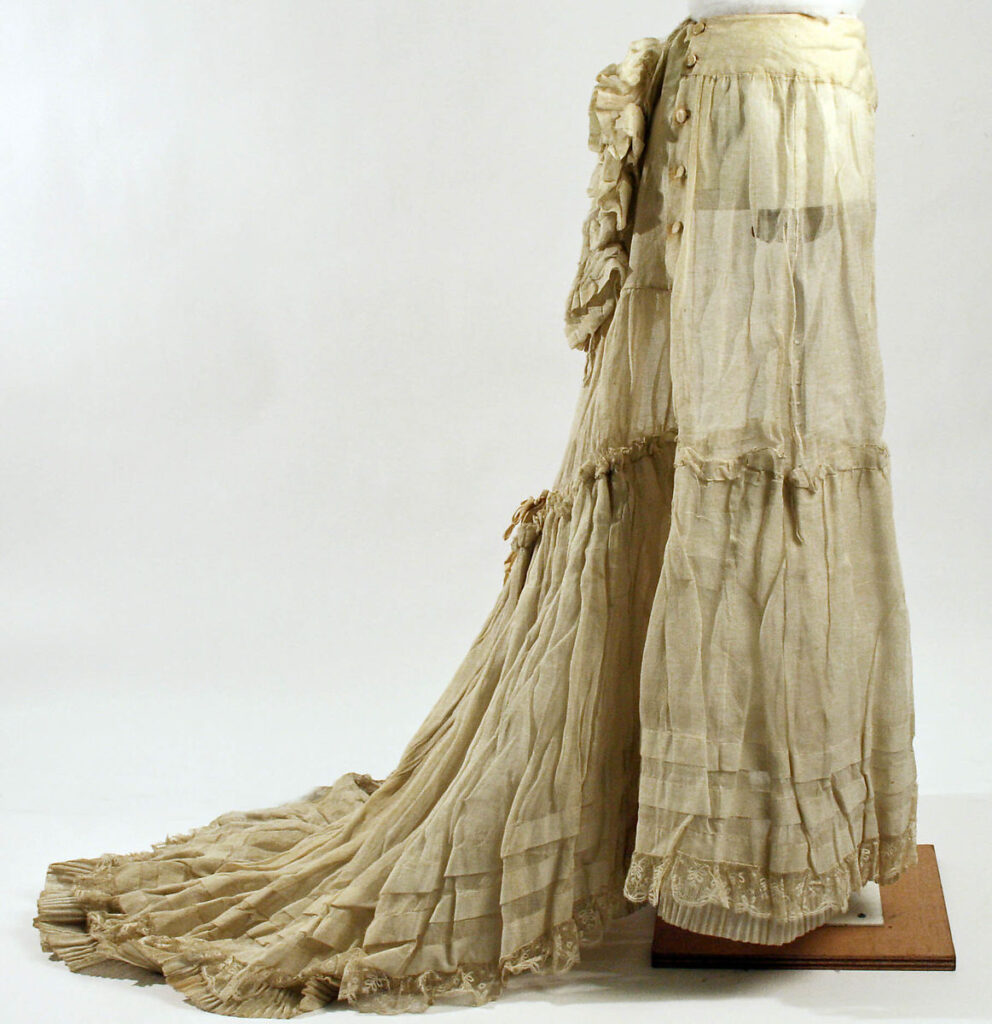
Do you think you would have enjoyed wearing a petticoat every day?
You may also enjoy:
The rise and fall of the bustle: a short history
Achieving the Gibson Girl S-silhouette: it’s all about the padding

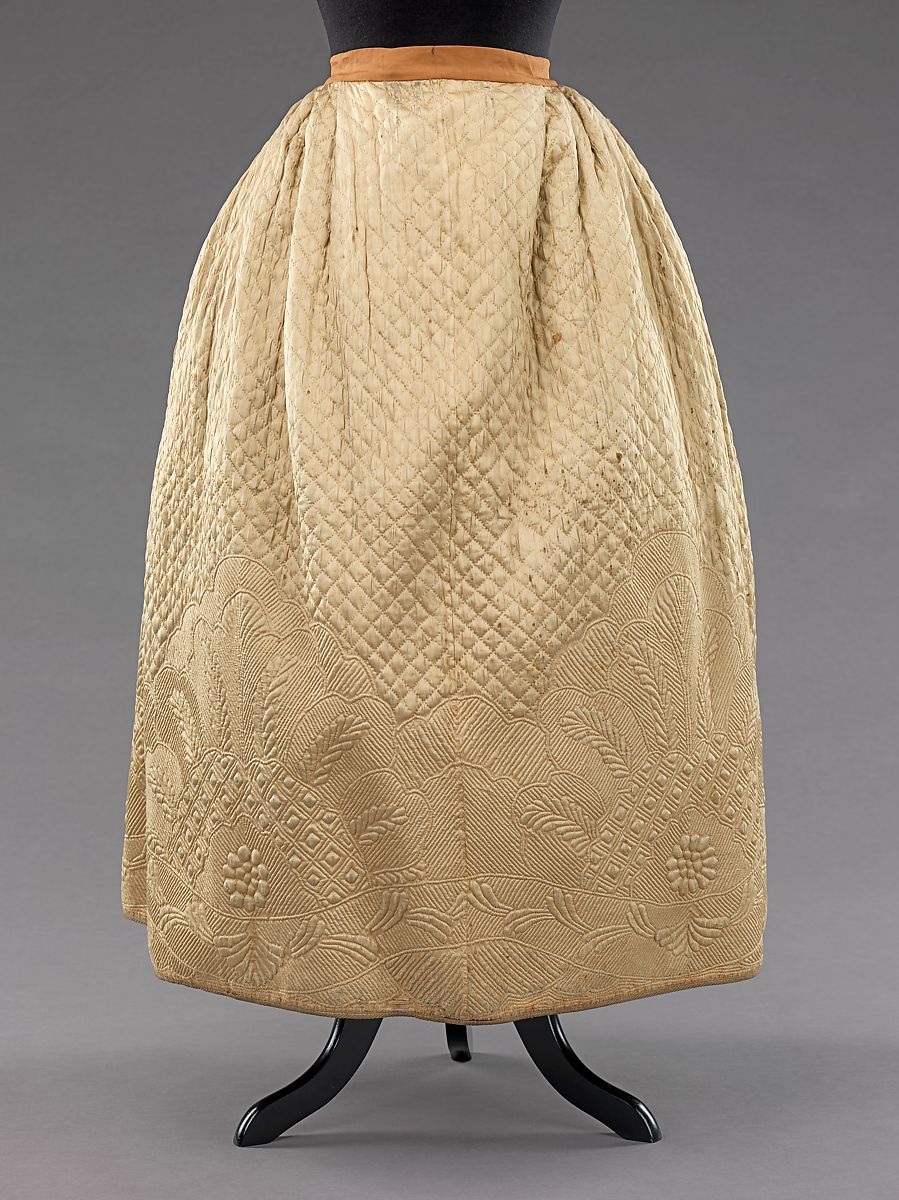












I’m just looking into a 1760 (English) will. The woman in question left four petticoats to four lucky (?) beneficiaries. I wondered if ‘petticoat’ had meant something else back then, so interesting to read that it didn’t.
One of the bequests is described as ‘my tartan quilted petticoat’. Wish there was a picture of that!
Enjoyed this post. Today with dresses, I wear them. Not as lavish and bulky as the historical examples, but dresses and skirts fit better.
My favorite antique textile is the 1850’s quilted petticoat I own. Feathers and cross hatching just do it for me! Thank You
Thank you, it was fun to see these, especially the more unusual ones (the red one IS divine). I do love the 18th century “pockets.”
Interesting! How very lovely those petticoats were, yes I would be tempted to wear them alone! Oh how imprudent! Learned some new facts, thank you.
I do wear them everyday, although not as elaborate or dramatic as the ones you describe. My job encourages “modest dress” for all employees, male and female, so I wear tea-length skirts and petticoats. They are comfortable, warmer in winter, cooler in winter, and fun any time.